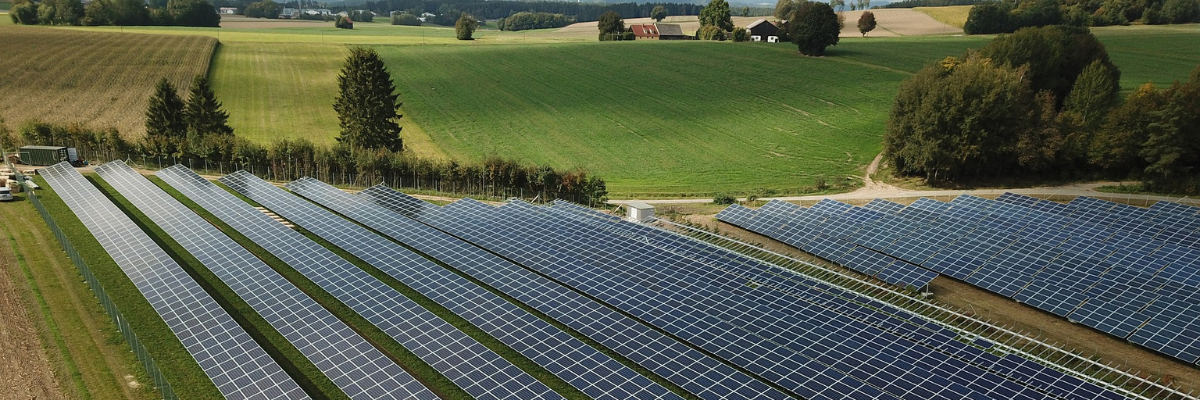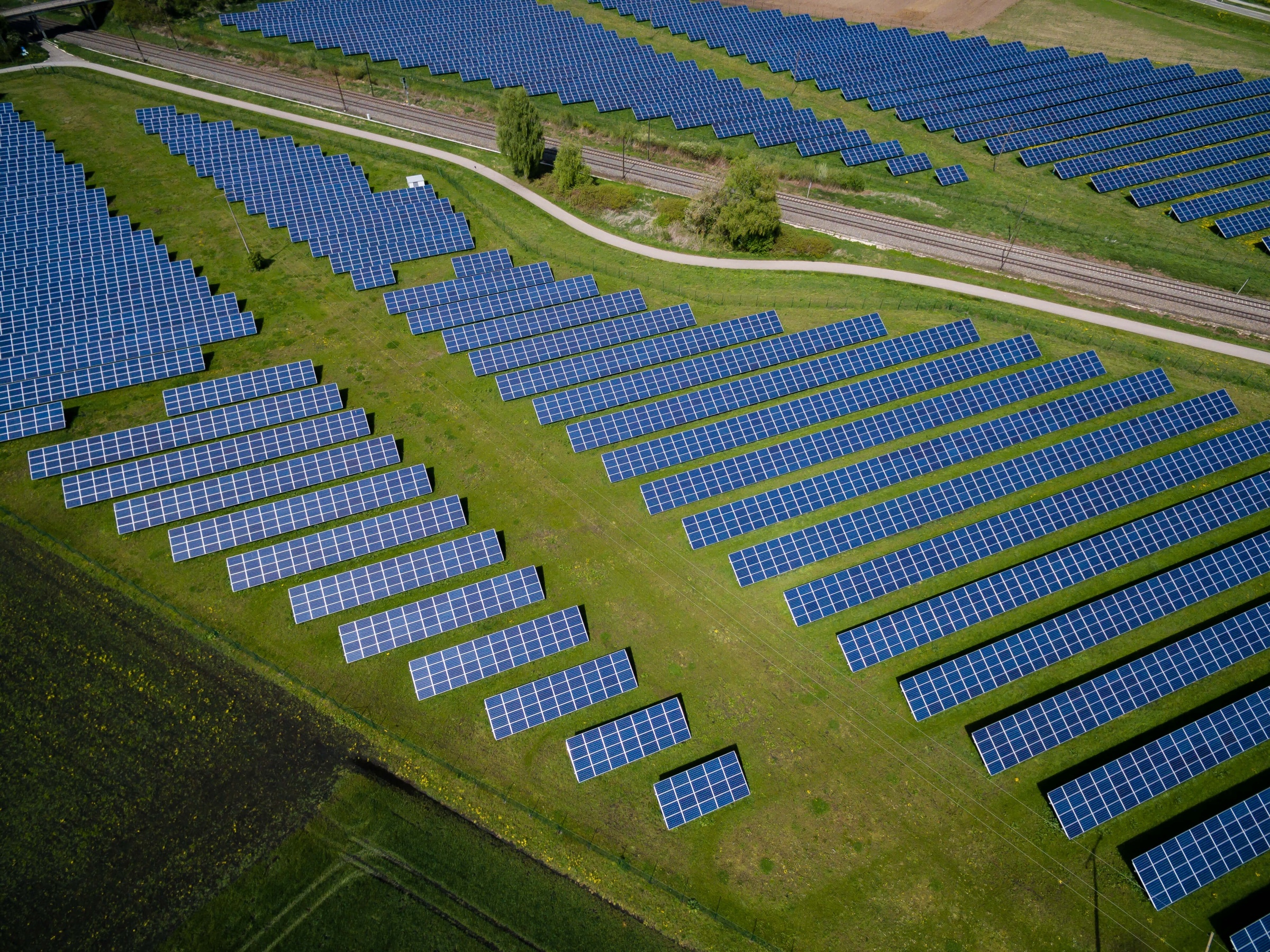A solar land lease is an excellent way to generate an additional revenue stream—with little to no effort on the part of the landowner. In 2021, solar developers across the United States are seeking suitable land for the development of solar farm projects. However, not every parcel of land is suitable for a solar farm and, although the specifics can vary on a project-by-project basis, there are some key requirements common to a successful solar farm.
Below, we have explored the five key areas which determine whether or not land is suitable for the development of a solar project. Of course, each piece of land is unique and the best way to determine the viability of a solar farm is to speak directly with an experienced solar developer. Nonetheless, the following points will give a general idea of whether or not land is suitable for a solar farm.
#1. Parcel Size
If the parcel of land isn’t large enough to house a solar farm, then the project won’t go ahead. Generally speaking, solar developers will require a minimum of 10 acres of usable land—or 200 acres for a utility-scale project. A good rule of thumb is that 1 kilowatt (kW) of solar panels requires an area of 100 square feet. It’s also important to note that local towns and authorities usually do not permit full coverage of the entire parcel. YSG’s experience is that instead, they will likely allow somewhere in the vicinity of 60% of the total acreage to be covered with the solar PV project. So, if we take our 10 acre minimum as an example, only 6 of those acres will be utilized after setbacks and zoning restrictions. This will be equal to a 1 MWdc solar facility based on YSG’s 5 acres per 1 MW rule of thumb.
#2. Land Condition
As with a traditional agricultural farm, the quality of the terrain will play a significant role in determining the viability and success of the project. Solar developers are seeking clear, flat land, with little to no wetlands, and minimal incline (5 degrees maximum). YSG has noticed a trend towards single-axis tracker units. This is a racking system that will move in a single direction (east/west) to maximize the generation of each solar panel. This can increase power generation by 15%. According to Kenneth DeCiccio at YSG Solar, the land must not exceed a 5 degree incline in order to utilize a tracker system. The land should receive plenty of sunlight annually and be stable enough to house all necessary solar equipment. Smaller obstructions like bushes, shrubs, and other vegetation can be removed—though this could increase overall project costs—but major obstructions which prohibit construction or cause significant shading may prove too big of a stumbling block for developers.
#3. Infrastructure Proximity
Alongside the size and quality of the land, its location will play a key role in determining the viability of a solar farm. YSG’s rule of thumb is to make sure that the parcel is within 1,000 feet of three-phase power, and 2 miles of a substation. The further away a location is from the grid, the higher the cost of interconnection for the developer. As the distance and the cost increase, the land becomes less desirable for prospective developers. Even infrastructure like road access is an important component, as easy access to main roads keeps transport costs low, thus reducing the overall cost of the project. Proximity to a big town/city may offer greater access to the infrastructure necessary for the operations and maintenance of a solar farm project. YSG’s project developer, Kenneth DeCiccio, says, “We avoid connecting solar facilities at the end of the circuit, and the closer proximity to the substation does impact our interconnection upgrade costs.” Items like primary metering, reclosures, and upgrading fuses at the substation are standard upgrade costs, while reconductoring can also be an expensive item. How much does it cost to run three-phase power to a solar farm? On average, in the Northeast of the U.S, the cost is $500,000 per mile of electrical feeder. The typical voltage that a solar farm is seeking will be 12 kV - 32.4 kV. 
#4. Local Policy
Regardless of the size or quality of a parcel of land, if local laws and regulations prohibit the construction of a solar farm, then the project will not be able to proceed. For a developer and landowner to work together and develop a solar farm, they need a clear path to construction and interconnection, with local policy allowing for the development of a solar PV project on the land. If there are immediate issues with construction permits or land limits then, unfortunately, the solar farm simply won’t be viable. These issues are more common in areas with fewer renewable energy projects, where the regulations and laws surrounding projects like solar farms are prohibitive or underdeveloped. YSG Solar has worked with various local governments to help rewrite zoning laws or other land use regulations to allow for solar farm development. Typically, items such as screening and visual buffers are of great importance to the community. In areas such as the Hudson Valley region in upstate New York, most of the towns require solar farm ‘screening’ per the local town code. Additionally, certain areas must be left undeveloped for environmental/conservation reasons. For example, the land may be home to a protected species of plant/animal.
#5. Flooding Potential
Before construction begins on a solar farm project, a flood risk assessment must be carried out to ensure that the land is not under threat from future flooding. If the risk assessment indicates a high risk of flooding then the project is unlikely to move ahead. However, even if the land is located on a floodplain, it doesn’t necessarily rule out a solar farm completely. In New York, for example, information regarding flood stage levels is available for most rivers in the state. So, even if the parcel is located on a floodplain, it may be possible to proceed with a solar project—it just requires a little extra planning to ensure that the solar equipment is both strong enough and elevated enough to withstand any potential flooding. It is important to note, however, that these additional measures could lead to additional project costs.
If you’re interested in leasing your land for a solar project then reach out to YSG Solar today. YSG willd determine whether or not your land is suitable for a solar farm and discuss the potential earnings for such a project. To learn more, get in touch by sending an email or calling the office at 212.389.9215.
YSG Solar is a project development company responsible for commoditizing energy infrastructure projects. We work with long-term owners and operators to provide clean energy assets with stable, predictable cash flows. YSG's market focus is distributed generation and utility-scale projects located within North America.

